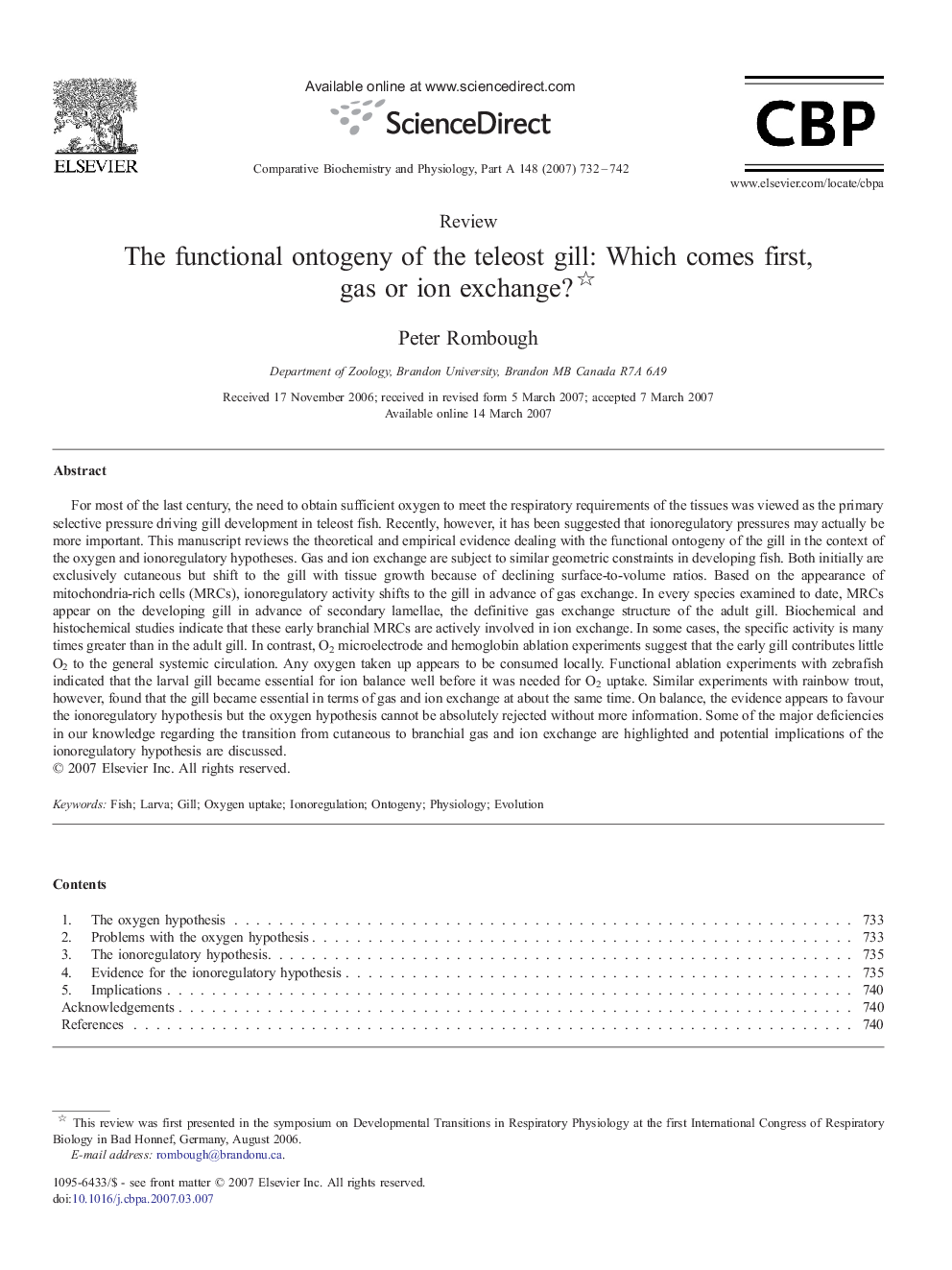| Article ID | Journal | Published Year | Pages | File Type |
|---|---|---|---|---|
| 1974065 | Comparative Biochemistry and Physiology Part A: Molecular & Integrative Physiology | 2007 | 11 Pages |
For most of the last century, the need to obtain sufficient oxygen to meet the respiratory requirements of the tissues was viewed as the primary selective pressure driving gill development in teleost fish. Recently, however, it has been suggested that ionoregulatory pressures may actually be more important. This manuscript reviews the theoretical and empirical evidence dealing with the functional ontogeny of the gill in the context of the oxygen and ionoregulatory hypotheses. Gas and ion exchange are subject to similar geometric constraints in developing fish. Both initially are exclusively cutaneous but shift to the gill with tissue growth because of declining surface-to-volume ratios. Based on the appearance of mitochondria-rich cells (MRCs), ionoregulatory activity shifts to the gill in advance of gas exchange. In every species examined to date, MRCs appear on the developing gill in advance of secondary lamellae, the definitive gas exchange structure of the adult gill. Biochemical and histochemical studies indicate that these early branchial MRCs are actively involved in ion exchange. In some cases, the specific activity is many times greater than in the adult gill. In contrast, O2 microelectrode and hemoglobin ablation experiments suggest that the early gill contributes little O2 to the general systemic circulation. Any oxygen taken up appears to be consumed locally. Functional ablation experiments with zebrafish indicated that the larval gill became essential for ion balance well before it was needed for O2 uptake. Similar experiments with rainbow trout, however, found that the gill became essential in terms of gas and ion exchange at about the same time. On balance, the evidence appears to favour the ionoregulatory hypothesis but the oxygen hypothesis cannot be absolutely rejected without more information. Some of the major deficiencies in our knowledge regarding the transition from cutaneous to branchial gas and ion exchange are highlighted and potential implications of the ionoregulatory hypothesis are discussed.
